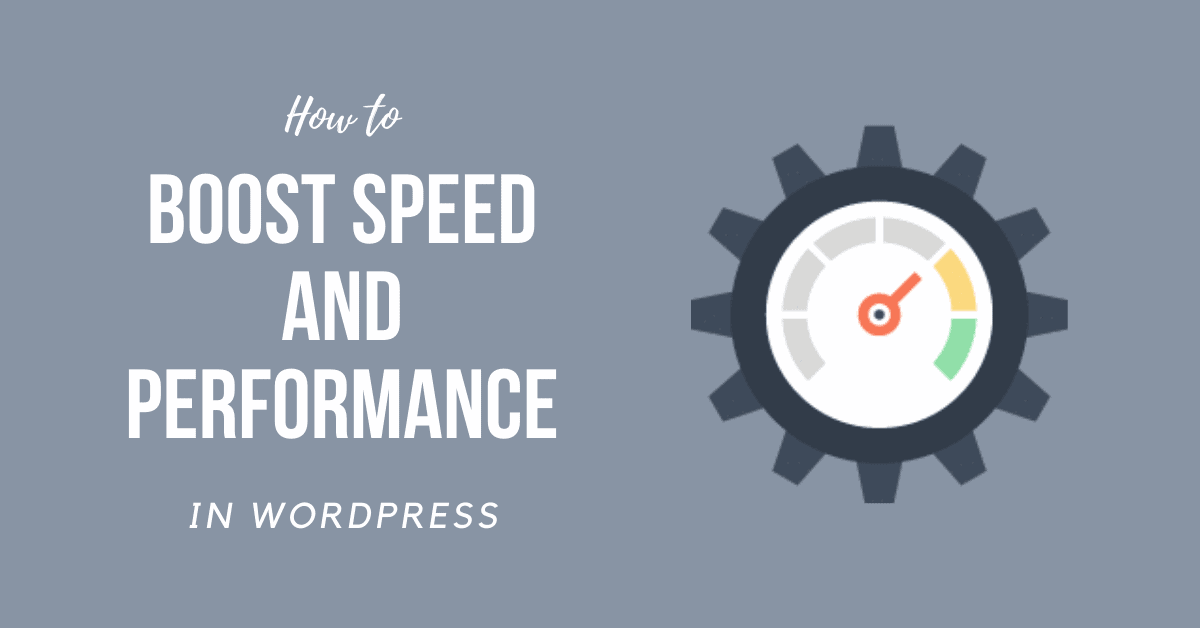Are you looking to accelerate your WordPress Website? This is The Ultimate Guide to Boost WordPress Speed and Performance. Fast loading pages maximize user experience, improve page views, and aid with your WordPress SEO.
About 38.8% of the site is operated by WordPress today. Although this is fantastic, it also suggests we all have to coexist with thousands of various themes, plugins, and innovations. This can quickly turn into a nightmare for the daily WordPress customer as their web begins to bottleneck, and they don’t know why or even where to start troubleshooting.
We’re going to dig into The Ultimate Guide to Boost WordPress Speed and Performance. We’re still going to share those services that have been important to us.
Why is Speed Important for Your WordPress Site?
Studies reveal that the total human attention span has fallen from 12 seconds to 7 seconds from 2000 to 2016. As a website user, what does this mean for you?
As a website user, what You have very little time to present your material to consumers and encourage them to continue on your website. A slower website ensures that the website will be left before it is loaded.
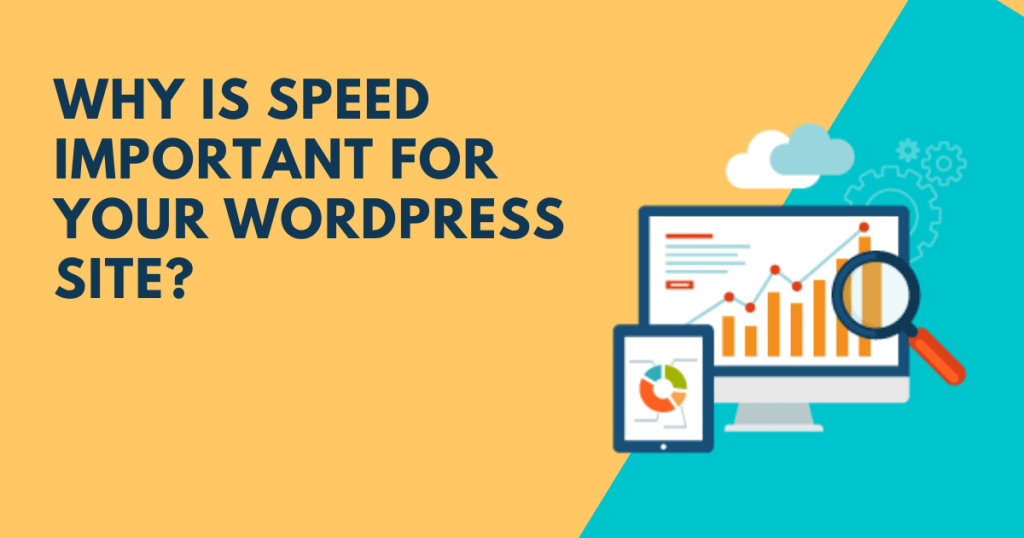
In a case study by StrangeLoop that included Amazon, Google, and other big websites, a 1 second time lag in page loading time could lead to a 7% reduction in conversions, 11% fewer page visits and 16% lower customer loyalty.
Here are a few of the various purposes you should do it:
- To boost customer interface and fulfilment: With a quicker website, the user interface will improve. Visitor satisfaction and loyalty increase on website speed. Websites with shorter page load time and decent loading speeds are users who prefer to stick. You will assume that more users can then click on your site if it is fast enough to be considered user-friendly. Per consumer needs the best experiences to access web pages.
- Increasing traffic on the website: Google likes fast loading websites. Optimization of the SEO website will boost your search engine ranking. In return, the website will be viewed by more users.
- To maximize the productivity of advertising: You pay clicks on your deals and user-experience content score/landing page if you use Google Ads to get traffic, right? The quickest the page, the higher quality and lower price per click you spend. If so, the positive influence per se justifies the investment in speed optimization in certain situations rather than it does.
- Improving business outcomes: Optimization of website functionality is the simplest and most reliable way to boost market performance, often cheaper than traffic. Optimizing your search engine and conversions websites successfully would increase your revenue, and understanding would undoubtedly enhance all of them.
How to Check Your WordPress Website Speed?
Sometimes, newcomers think their website is all right only because their machine doesn’t feel sluggish. However, this is a Huge Mistake.
As much you visit your website, modern browsers such as Chrome store your website in the cache and pre-record it automatically as soon as you start typing a URL. This almost automatically loads the page.
A regular person browsing your website may not have the same experience for the first time.
Users would likely have a totally different experience in certain regional areas.
So, we recommend you to use IsItWP’s WordPress speed test in order to get the exact speed of your website.
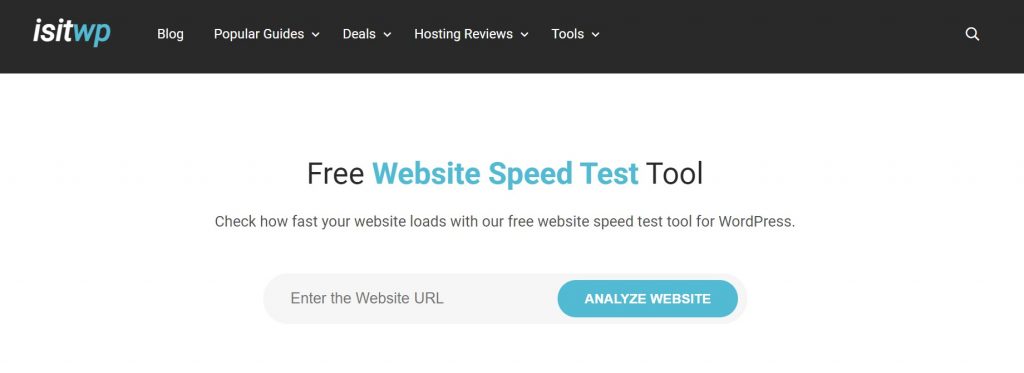
IsItWP’s WordPress speed test is a free online application for checking the pace of your website.
The time to load a decent page is less than 2 seconds.
So the sooner you can get it, the easier it will be. A few milliseconds of changes will add up to half or a full second off your load time.
What Slows Down Your WordPress Website?
Your speed test study undoubtedly includes some change recommendations. Most of it is technical terminology. However, that is difficult to understand by beginners.
The secret to improving your efficiency and make more intelligent, long-term decisions is understanding what slows you down.
A slow WordPress site is triggered mainly by:
- Web hosting: if your web hosting server is not installed correctly, it will impact the speed of your site.
- WordPress Configuration: If you do not have a cached page on your WordPress site, it overloads your website so that your site is sluggish or crashed altogether.
- Page size: Mainly images that are not web-optimized.
- External scripts: External scripts will also have a major influence on the output of your website, such as advertisements, font loaders, etc.
- Bad Plugins: If you’re using a badly coded plugin, the website will slow down dramatically.
Now that you know what delays your WordPress website, look at how your WordPress website can be speeded up.
The Ultimate Guide to Boost WordPress Speed and Performance
It is necessary first of all to realize that not all WordPress pages are the same before digging into WordPress speed optimizations. Therefore, certain people have concerns, and you can’t solve any problem in the same manner. We still classify WordPress websites: static or interactive. Let us first discuss the distinctions between these two pages. Static pages mostly
Types of WordPress Sites
Static Site
Static Website will typically include websites like blogs, small business pages, lower-volume news sites, employees, photos, etc. Statically speaking, we say that the details on these WordPress pages do not change very much (perhaps a couple of times a day).
This is particularly necessary since many requests can be immediately transmitted at high flickering rates on the cache server. Don’t worry; we’re going to delve deeper into the caching subject. That ensures you have fewer calls from your servers and not as much money to perform Google.
Dynamic Site
A dynamic website is more functional than static websites that are merely educational. It enables users to connect with page-listed content. Of necessity, more than just HTML code has to be included.
Static websites use HTML and CSS code on the client-side only, while dynamics rely on scripting languages on the client and the server, including JavaScript, PHP, and ASP. A user may access a dynamic site, a code executed by the browser and/or server to alter the site. The result is the same as on a static website: the web browser has an HTML tab.
Step 1: Pick WordPress Hosting with High Performance
A WordPress host is an organization that holds all the material on your website. You sign up and live on a server in the data center with a plan and all your photos, content, videos, etc. WordPress Host offers a convenient way for the guests to view, handle, and move the data. Very straightforward, right?
There are three widespread forms of hosting WordPress across the internet. Let them into each other’s benefits and adversities. It’s essential to pick the correct one from the start. If not, you’ll get headaches and spend your time on the road.
The first and best-known form of hosting for WordPress is what we refer to as ‘shared hosting,‘ including the biggest host business companies, including EIG companies like Bluehost and HostGator and providers including Siteground, GoDaddy, Media Temple, and InMotion Hosting. They typically use cPanel and usually cost from $3-$25 a month to the average user.
Anybody who uses this hosting experience slowness at some point. This is just a problem of time. How does that happen? Since shared hosts tend to overload their servers, which can affect your website’s efficiency. Site suspensions or 500 mistakes are typical problems you will face, and all these have to be minimal and resources consolidated to survive. Your WordPress website is potentially on the same server as more than 200 others. Any problems with other websites will trick into your website.
Bluehost
With good customer support, uptime, and value for money, Bluehost is the best hosting company among all. This is the most dependable hosting provider if you want to host a WordPress site. In addition to this, some of Bluehost‘s features are more powerful than others.

Customer service, high uptime, and competitive startup plans from Bluehost make it a trustworthy hosting company.
SiteGround
SiteGround promises quick and safe shared service, making it an attractive option for small and private sites. SiteGround offers decent shared hosting, generous support and assistance options, and an uptime of 99.98%.
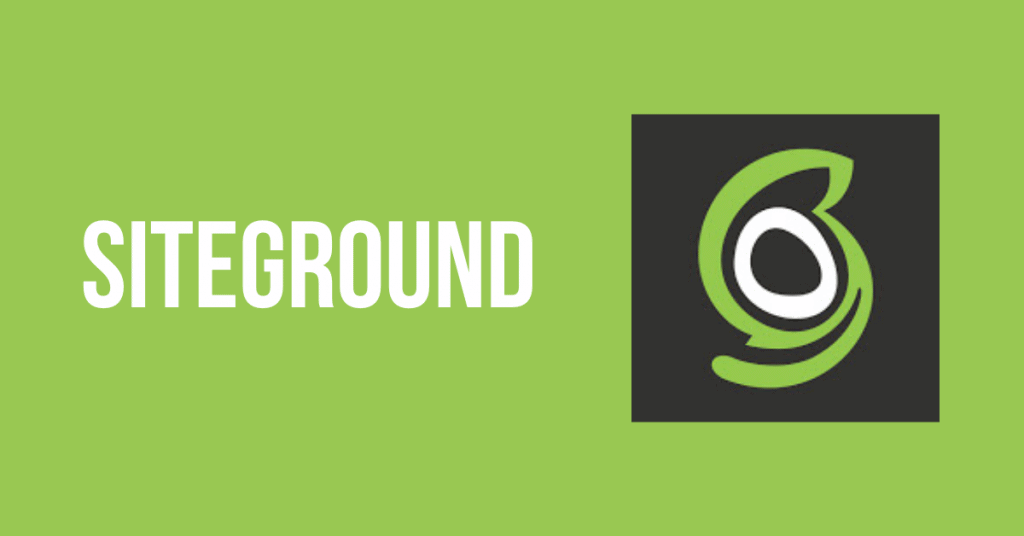
But it falls behind its competitors when it comes to disk space and value for money. The disk space available maximum is 40GB – compare it to other providers with unlimited disk space, and it is difficult for SiteGround to impress.
VPS WordPress Hosting
The second type of WordPress hosting is VPS WordPress Hosting. This group usually consisted of bootstrap startups and users with more development, server management, and WordPress experience. This can also do it on a virtual private server.
Typically, these people are still trying to save money, but they are usually also concerned with performance and realize its importance in their success. Commons configurations may include using a third-party VPS provider such as Digital Ocean, Linode, or Vultr; to manage it more efficiently with a tool such as ServerPilot.
If you are not technologically expert or just because you want to tweak, do not follow this path! Your time is worth money, and you should spend it on your company’s growth.
Managed WordPress Hosting
The third type of hosting is Managed WordPress Hosting. These kinds of hosts handle all tasks associated with the back-end server and provide support when needed. Typical features such as a one-click insertion environment and automatic backups are fine-tuned for work with WordPress. Their support teams will know more about the CMS because they focus on a single platform daily.
If you want to save time, Managed WordPress Hosting is the great way to continue your way to dream website.
WordPress hosting plans typically range from $25 to $150 a month or more, depending on your site’s size and needs. Large companies such as Intuit, JQuery, Plesk, Dyn, and Nginx, and The White House all host their WordPress website. A few popular WordPress managed hosts you probably know about or use WP Engine, Flywheel, Pressable, Media Temple, Pressidium, and Pagely.
Step 2: Upgrade to PHP 7 or Higher for the Best Performance
PHP is an open-source, server-side scripting and web developer programming language. The majority of the WordPress core software and your plugin and themes are written in PHP, making PHP a fundamental language in the WordPress community. At least PHP 7 or higher should offer PHP 7 or higher on your WordPress host.
There are different PHP versions on your server, and the newest PHP 7.3 offers enormous improvements in performance.
Comparing PHP 7.3 with PHP 5.6, PHP 5.6 can manage three times more requests (transactions) per second in recent PHP benchmarks. On average, PHP 7.3 is also 9% quicker than PHP 7.2. This can also affect the reaction of your WordPress dashboard admin.
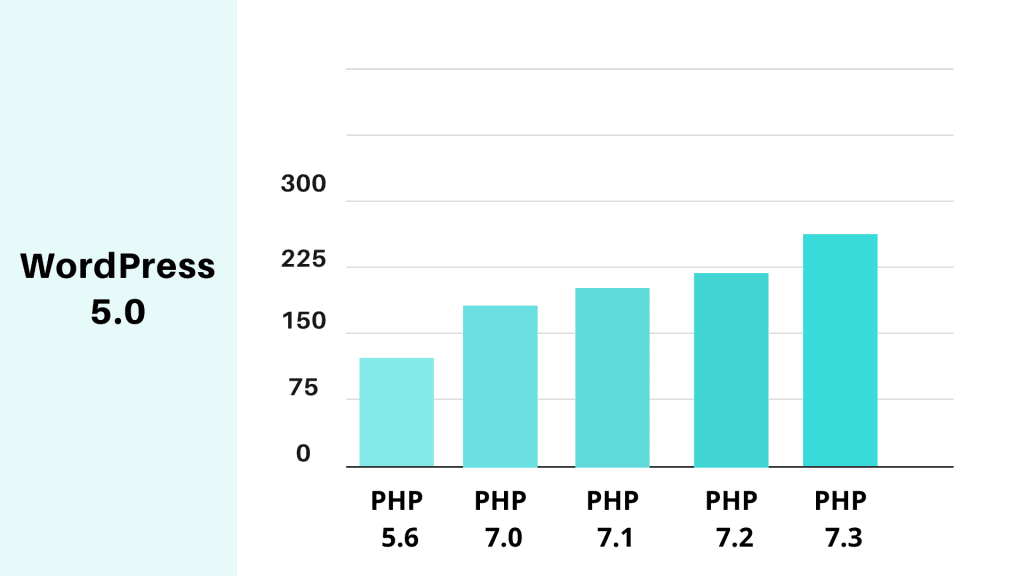
Step 3: Pick a Host That Uses Nginx
Each WordPress host uses a web server for powering up WordPress sites behind the scenes. Nginx and Apache are the most common options.
With a host that uses Nginx, we strongly recommend using it due to its scale optimization roots. Nginx often outperforms other popular benchmarking web servers, particularly in static or high concomitant demand situations, so WPMarks uses Nginx.
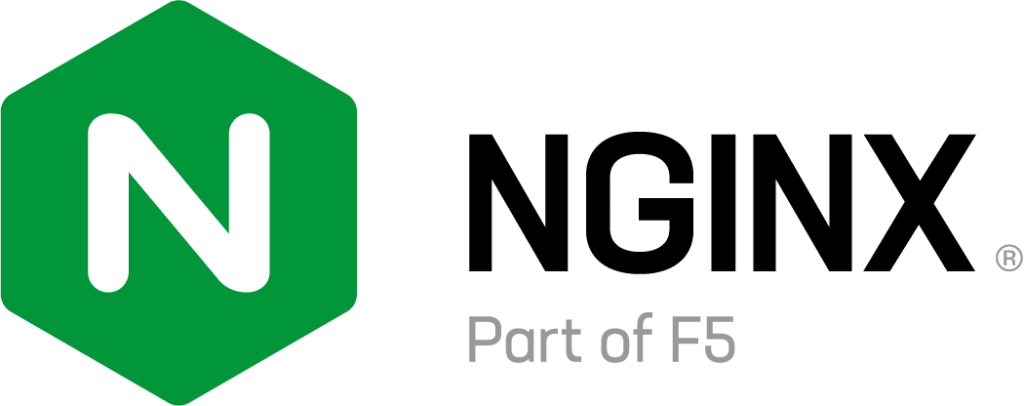
Some of Nginx’s top profiles include Autodesk, Atlassian, Intuit, T-Mobile, GitLab, DuckDuckGo, Microsoft, IBM, Google, Adobe, Salesforce, VMWare, Xerox, LinkedIn, Cisco, and many more.
According to W3Techs, Apache is the most popular choice for 44.0% of all websites. However, if you look at Nginx’s most popular high-speed webserver (top 10,000), Nginx is 41.9%, while Apache only is 18.1% powerful. It has been used by the most innovative websites available, such as Netflix, NASA, and even WordPress.com.
Step 4: HTTP/2 is a must
HTTP/2 is a 2015 Web protocol intended to speed up the delivery of websites. It requires HTTPS due to browser support (SSL). You should begin looking for a new provider if your WordPress host does not support HTTP/2. Moving the whole web to HTTPS is not just a useful feature; it is a necessity any longer.
The improvement in HTTP/2 performance is due to several reasons, such as better multiplexing, parallelism, HPACK compression, the ALPN extension, and the Server push. TLS has been quite overhead for HTTPS, but thanks to HTTP/2 and TLS 1.3, it’s a lot less. This is not enough. On all our servers and CDN, WPMarks supports HTTP/2 and TLS 1.3.
Step 5: Select your visitors closest server
One of the first things you can do to host your WordPress site is to decide where most users or clients come from. Why does it matter? Due to the location where you host your website, the overall network latency and the TTFB will determine the overall network latency and the TTFB considerably. It also affects your SFTP speeds and the responsiveness of the WordPress dashboard.
Network Latency: This applies to the time and latency of transferring data over a network. In other words, how long a packet of data takes to go from one point to the next. This is usually calculated today in milliseconds, depending on the network, though it may be seconds—The closest that comes to zero, the better..
TTFB: Time to first byte (TTFB) is a calculation that is used as an example of a webserver or other network resource’s responsiveness.
TTFB compares the length of an HTTP request from the user or device to the first byte of the page that the client’s browser receives. This time consists of the socket’s link-time, the time taken to send the HTTP message, and the time taken to get the page’s first byte. Although often mistaken as a post-DNS measure, network latency in calculating the time it takes a resource to start loading is often used in the original calculation of TTFB in networking.
It would be best if you remembered that you want the latency of your network and TTFB to be as minimal as possible. Choosing a server nearest to the guests is one of the best ways to do this. By following the tips below,
Test the visitor’s geo-location in Google Analytics
The geolocation of your guests in Google Analytics is one of the very first thing you can do. This can be found under “Audience >> Geo >> Location.”

You can see that over 90% of the traffic comes from the US in this example below. But much of the time you want the WordPress site to be put on a server in the USA. The data can also be further filtered to towns.
Verify Ecommerce Data
When running an eCommerce shop, often make sure that you search where your clients are located. That’s how you raise sales, of course, because these are your only guests. This should balance your above traffic, but this is not always the case.
In Google Analytics, you can conveniently overlay details from the top of Geolocation Data in an educated decision if you have eCommerce data setup or goals. Or inspect positions contained in the database of your eCommerce website.
Perform a Quick Latency Test
Many useful free applications are available to calculate latency for various cloud services from your current location. This will allow you to easily decide which area might be your website’s best option. These are some of the free services which you can trust:
- GCP Ping: Measure Google Cloud Network region latency
- CloudPing.info: This measurement tests latency for regions of Amazon web services.
- Azure Latency Test: This measure latency to Azure regions.
Here in the example, we can see that we are situated in Oregon, USA (us-west1). However, it would be easier to pick Iowa, USA, to maintain low latency for travelers from both western and eastern coasts if you service consumers in the United States.
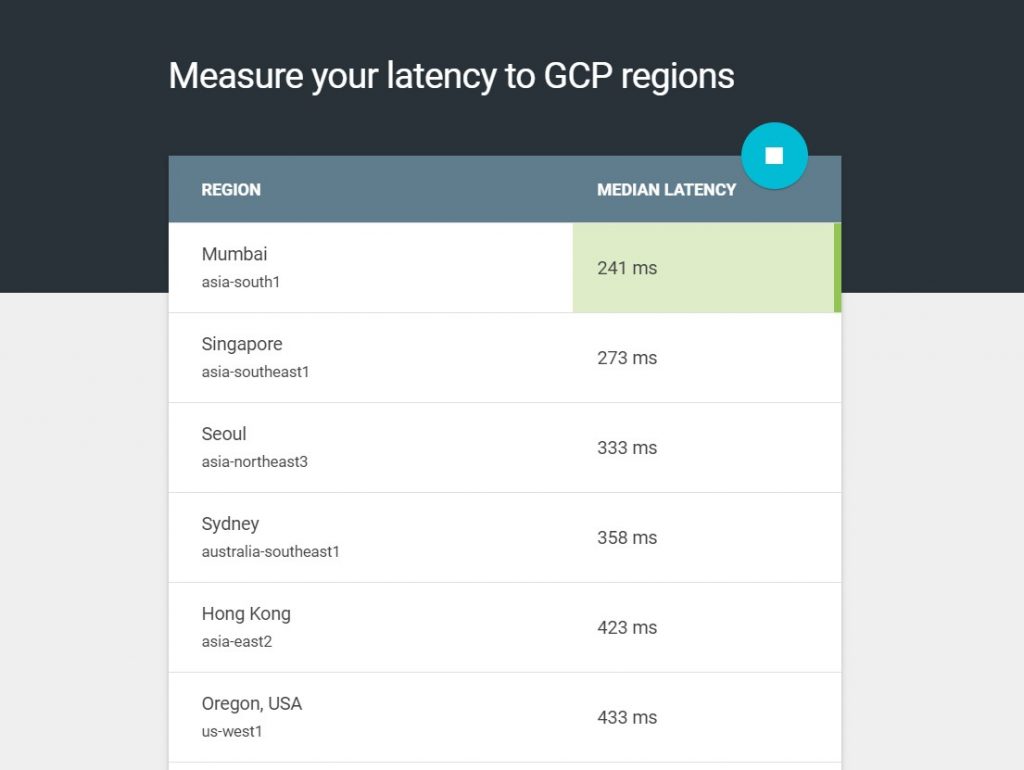
Further approaches to minimize TTFB and Latency:
- Incorporate the WordPress website with caching. In our tests, our TTFB has dropped by an amazing 90%.
- Applying a content delivery network (CDN) to serve POPs across the globe with cached properties. For guests that may not be close to your host server, this helps negate the network latency.
- Reduce the number of external HTTP requests. Depending on their server’s position, each of these will have its additional latency.
- DNS plays a role in TTFB, so you can use a premium DNS provider for fast lookup times.
- To execute tasks behind the scenes as the page loads, use prefetch and prerender.
Step 6: Use Premium DNS for Better Experience Than Free DNS
DNS is one of the most popular and overlooked elements of the network landscape and is short for a domain name system. To put it straightforwardly, DNS allows you to link domain names to individual web servers to guide traffic on the Internet.
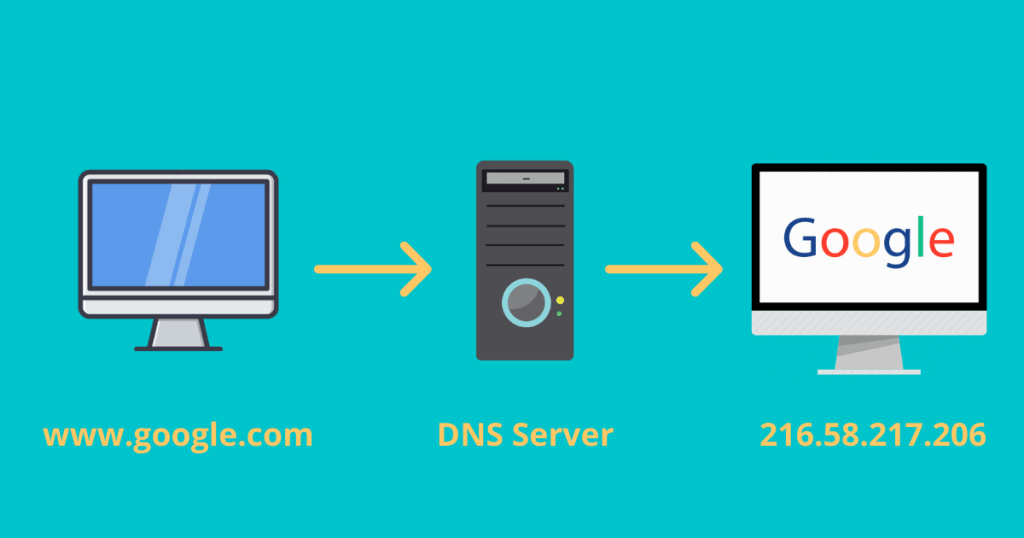
Speed and stability are a huge reason to pick Premium DNS. Even though it is only a matter of milliseconds, it takes time for DNS records and traffic control.
The free DNS you get from your domain name registrar is usually sluggish, although paid DNS always performs better. For instance, our tests free NameCheap DNS was 33 per cent lower than the premium Amazon Route 53. Also, premium DNS will provide enhanced protection and availability, especially when you are on a DDoS attack.
Step 7: The center of the site: your selected themes
Everyone likes a brand-new WordPress theme, but make sure to take it with all-new, shiny features before you come out. Next, you can look at the gaps between free and paying theme. Each element in a subject has a specific effect on the overall pace of the website about results. And sadly, there are both good and bad with thousands of theme.
And how do you decide which theme to choose?
- A quick, lightweight WordPress theme that is packed with nothing more than the features you need.
- A WordPress theme that’s more feature-rich, but you can uninstall features that are not in use.
Things like Google Fonts, Font Awesome icons, sliders, galleries, video and parallax scripts, etc. These are only a handful of the many devices that, if you are not using them. You should be able to toggle off. You don’t want to try to manually tweak it after the fact. And we’re not going to show you 50 ways of stripping stuff down. Instead, you can start or turn to a WordPress theme that, from the beginning, is either lightweight or offers you these choices.
Below are a few WordPress themes that we suggest:
With WooCommerce and Fast Digital Downloads, WPML, BuddyPress, and bbPress, any theme listed below is entirely compatible.
Astra
Astra is a simple, completely personalized, and beautiful topic suitable for blogs, personal portfolios, company websites, and stores of WooCommerce. It is highly lightweight and delivers unequaled speed (less than 50 KB at the front line).
Looking at the WordPress repository, there are more than forty thousand active installs, more than 1.6 million downloads, and another 5 of five stars in the free version (over 2,500 people have given it five stars) (over 2,500 people have given it five stars).

How fast is it? We did a new Astra installation; we conducted an average of five-speed checks in Pingdom. The average load times are 243 ms and just 26.6 KB in total.
The dilemma is that a complete analysis side by side is almost unlikely. We wanted to show that all these themes are quick, out of the box, and unfinished demos.
OceanWP
The theme OceanWP is lightweight and incredibly extensible. This enables you to build virtually any sort of website with a beautiful & professional interface, such as a blog, portfolio, company website, or WooCommerce shop.
Look at the WordPress repository, and currently, there are over 400,000 active downloads and 5 out of 5 stars in the free version (over 2,600 people have given it five stars).

We did a fresh install of OceanWP, ran five-speed tests in Pingdom, and took the average. The total load time was 389 ms, with a full-page size of only 230.8 KB. The scripts in OceanWP are slightly large.
GeneratePress
GeneratePress is a fast, lightweight WordPress theme designed with speed, SEO, and usability in mind and created by Canada’s creator Tom Usborne. It is updated actively and supported.
The edition is both free and premium. Looking at the WordPress repository, today’s free edition includes more than 200,000 active installed versions, 2 million+ installs, and 5 out of 5 stars (over 850 people have given it five stars).

One of the essential things regarding GeneratePress is that all choices use the WordPress native personalizer, so you can automatically see any adjustment before you press the publish button. You don’t even have to learn a new control panel on this theme.
We have done a new GeneratePress installation, conducted five-speed tests at Pingdom, and have taken the mean. The loading time average was 305 ms and just 16.8KB in page size. To see what the theme is capable of concerning raw results is always a successful starting test.
Here are some suggestions about Page Builder:
When using a page builder plugin, here are a couple of things to keep in mind.
- Some page builders on your site might increase the load time. They have to load additional CSS and JS. Before and after installing a page builder, we always recommend speed testing of your WordPress site.
- You’re engaging and locking yourself into that design page builder. Make sure you pick one that is updated regularly and has all you need for the long run.
We are also huge fans of page builders like Elementor and Beaver Builder. For the most part, with performance in mind, they are developed and only add a bit of overhead. In some instances, they may also be faster because they could replace 5+ other plugins that you would have had to use otherwise.
Step 8: The WordPress Plugins Lowdown
You have been advised may have advised you that you shouldn’t add too many plugins because this may slow down your WordPress site. This is often real, but it is not the most critical aspect. The number of plugins is not as significant as the consistency of plugins.
Although it’s fun to add code to the web, it’s not always feasible for the following reasons:
- You have to keep the coding on your own and keep it updated as the specifications change.
- Most of the time, a well-coded plugin won’t add any more overhead than the coding itself.
- You’ve got to note that most of the WordPress audience isn’t as tech-savvy as the developer crowd. Plugins are solutions that help you fix problems.
We want to share the day stuff we use. And yes, on our blog, like the others, we use WordPress plugins. Many of WPMarks’s team members also build and distribute plugins.
Step 9: Optimal WordPress Generic Settings
Now switch to the optimum setup of WordPress. Here are a few improvements that will help to improve the WordPress platform speed up. Many of these improvements are very detailed.
Adjust Your Login URL of your WordPress Site
The login URL for your WordPress site is domain.com/wp-admin/.
One of the issues with this is that it is already known to all bots, hackers, and scripts out there. You can make yourself less of a priority by updating the URL, help defend yourself from brute force attacks, and decrease the bandwidth used by the bots that repeatedly strike this URL.
You can also stop typical mistakes like the “429 Too Many Requests.” modifying the WordPress website URL. It is not a fix to all solution, and it is just a little trick that can help to shield you and reduce the load on that tab.
We suggest to use one of the following plugins to change your WordPress login URL:
- WPS Hide Login (It’s free)
- Perfmatters (Premium but some settings for maximizing performance include)
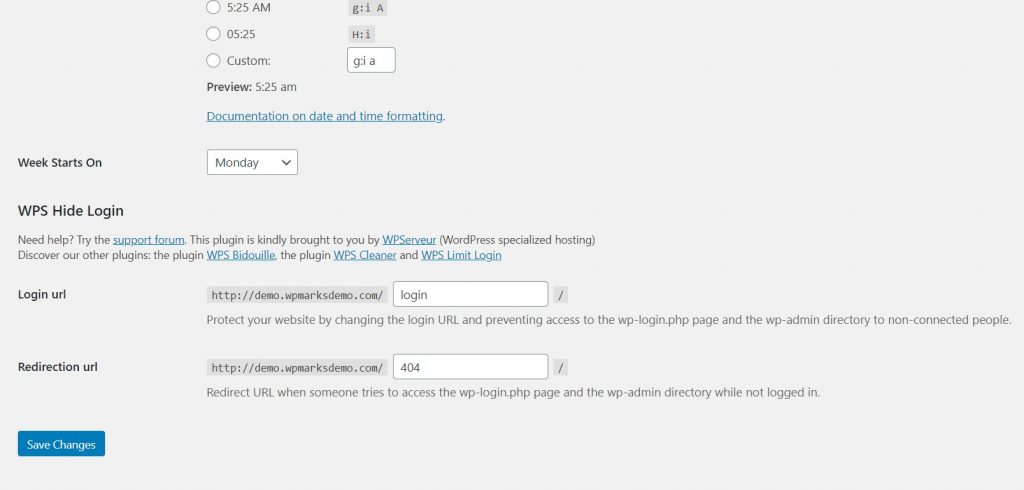
.The plugin is easy to use. You can just follow the screenshot above.
Adjust Plugin and Theme Updates
The server, cloud service location, and even PHP versions can cause sluggish WordPress manager dashboards. But another aspect for which not many people are talking is the WordPress update checker, which works behind the scenes.
The concern is that an automated GET request is made by the built-in WordPress update control framework (https://third-party-plugin/update-check.php) behind the scenes. It could throw your admin console into a crawl because it happens all the time.
This is an issue on how to develop the WordPress update control system. You will want to try if you suffer from long load times for the WordPress admin dashboard. The alternative is to uninstall updates automatically.
Warning: Do this only if you want to search manually for updates. Security and error patches are part of several upgrades.
To deactivate updates, one of the following plugins is recommended:
Disable Pingbacks
A pingback is an automatic comment generated by linking another blog to you. It can even create self-pingbacks if you connect to an article in your blog.
We recommend that you deactivate it because it creates useless queries and spam on your web. Note, the fewer your WordPress site calls, especially on traffic-intensive pages. Not to mention the pingback is just utterly irritating on your page. To deactivate pingbacks, take the following procedures.
Disable Pingbacks From Other Blogs
Here are the steps you need to follow:
- Navigate to Settings >> Discussion.
- You will see “Allow link notifications from other blogs (pingbacks and trackbacks) on new posts” Just Uncheck that option.

Deactivate Self-Pingbacks
You have a few options when it comes to auto-pingbacks disabling. The plugin No Self Pings is free to use.
Alternatively, by applying the following code to the WordPress functions.php file, you can disable self-pingbacks too.
function wpsites_disable_self_pingbacks( &$links ) {
foreach ( $links as $l => $link )
if ( 0 === strpos( $link, get_option( 'home' ) ) )
unset($links[$l]);
}
add_action( 'pre_ping', 'wpsites_disable_self_pingbacks' );
Step 10: Cache and It’s Importance
Caching is by far one of the simplest and most appropriate ways of accelerating WordPress s, But it is essential to understand how caching works and how it works before we can teach you how caching works.
What is Caching?
In information technology, a cache is a high-speed data storage layer that stores a subset of data that is usually temporary, such that potential data requests are served as quickly as possible by reaching the primary data storage center. You can reuse previously retrieved or measured data virtually through Caching.
The cache data is usually stored in high-speed hardware like RAM and can also be used in connection with the software component. The key aim of a cache is to improve the efficiency of data recovery by decreased usage of the underlying slower storage layer.
Step 11: Optimizing the picture is required for speed
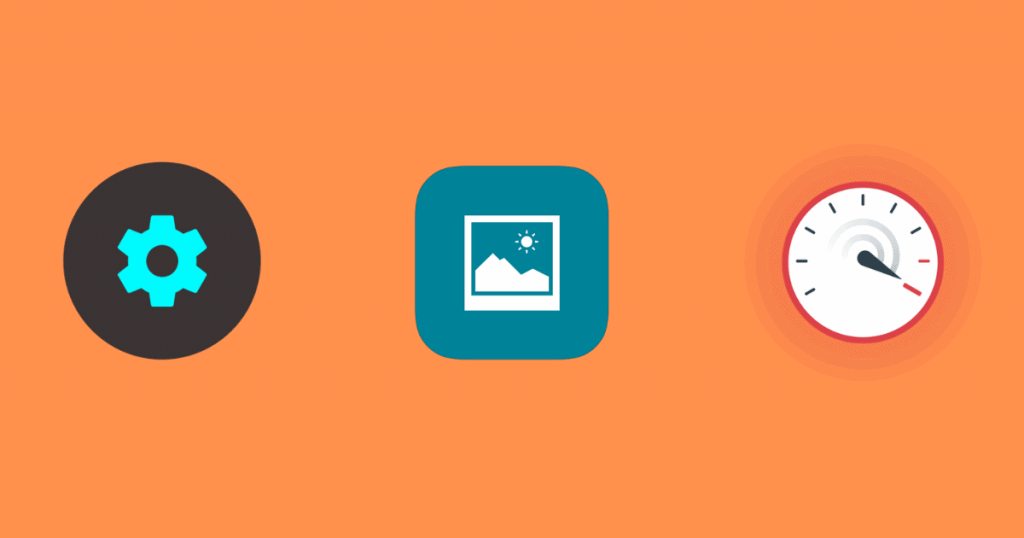
Optimization of images is another essential step you can create that dramatically affects the website’s average load times. This is not optional. So, every website should follow the given instruction:
- Reduce bigger pictures to minimal file size
- Compress image resolution
- It will help if you use the required photo formats
Optimizing images is a dramatic reduction in their size when using either an algorithm or extension, which in turn accelerates the page’s time for loads.
Images typically represent a large part of the weight of a website. Photos are the first place after photographs, which are much harder to optimize! It’s far more relevant than JavaScript, CSS, and Fonts. And an outstanding picture optimization procedure ironically is one of the most straightforward execution stages, but many website owners do not realize this.
Some Image Compression Plugins
The best news is that you can simplify the whole process by using some awesome WordPress image compression plugins. Some of the plugins that we suggest are:
The most significant element to use when selecting a plugin to customize an image is to compact and optimize photos on their servers externally. This reduces the website’s load.
It all depends on the scale and compression of the initial images. But we conducted some speed testing and found that a solution for quality compression would minimize page load times by more than 80 percent.
Step 12: Fine-Tune Your Database
Your database holds all your records, including many of the waste you consider to be excess (old plugins data, old content revisions, temporary files, among many others). For a massive traffic platform, hundreds of thousands or millions of records can be quickly accessed, all of which the site has to process on a request.
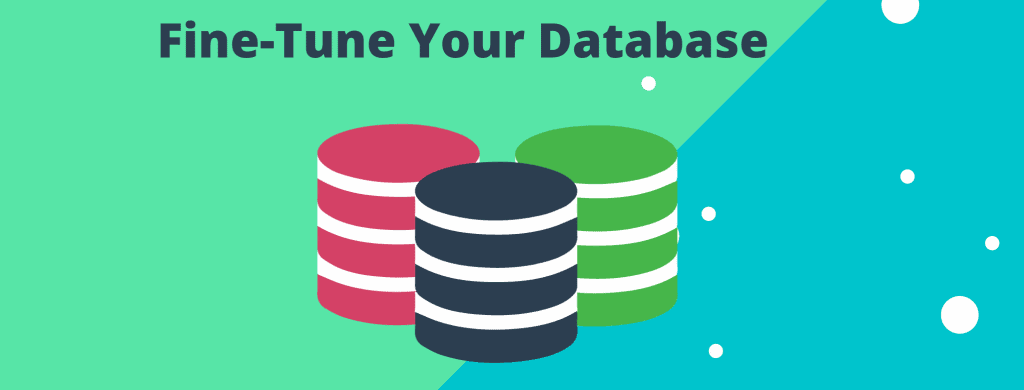
Your database is like making an aviation infrastructure – safe, configured, problem-free, and continuously managed to ensure smooth operation and mainly to prevent accidents that happen catastrophically.
Here are also tips on how to modify and manage the WordPress database properly:
- Using the new updates of the database and engine technology
- Maintain updated servers
- Remove and restrict website including post revisions
- Check your wp_options Table as well as Auto-loaded Data
Auto-load is all we care about when it comes to speed efficiency. Auto-loading files are data loaded on all WordPress web tab. The default automatic load attribute for developers is “yes.” However, not all plugins can load their data technically.
Using the InnoDB MySQL Storage Engine
Many older sites do use MyISAM in their database storage engine. In recent years, InnoDB has shown improved efficiency and reliability.
InnoDB has several advantages over MyISAM:
- Row level locking is available to InnoDB. MyISAM has complete table locking only. It allows you to process your inquiries more quickly.
- MyISAM does not have what is known as referential integrity, which includes the support of foreign keys (RDBMS) and relationship constraints (DMBS).
- Transactions are supported by InnoDB, meaning you can commit and rollback. However, MyISAM has not.
- As it utilizes transactional logs for auto-recovery, InnoDB is more reliable, whereas MyISAM has not.
Step 13: Implement Content Delivery Network (CDN)
For content distribution networks, CDN is limited. This is a network of servers located around the globe (also known as POPs). These programs purposes are to host and provide copies of static content (and sometimes dynamic) of your WordPress websites, such as images, CSS, and JavaScript.
Different Types of Content Delivery Network (CDN)
The content delivery network consists of two different types:
- Traditional Pull CDN
- Reverse Proxy CDN
Traditional pull CDNs cache a backup of your contents and media, but the client also asks your hosting provider directly.
Although the CDN still functions, all incoming applications are intercepted, and the agent between the server and the client behaves. Examples of reverse proxy CDN are Cloudflare and Sucuri. This is one reason you have to direct your DNS to these providers rather than your host.
Sum Up
Congratulations, you have finally learned about The Ultimate Guide to Boost WordPress Speed and Performance. Moreover, some of the visitors also asked us about How to Fix 403 Forbidden Error in WordPress. Do check the dedicated article on this.
If you enjoyed this post, subscribe to our WordPress video tutorials on YouTube Channel. Remember to follow us on Pinterest.
We accept any type of suggestions from the visitors because it always motivates us to improve. Feel free to comment below.
